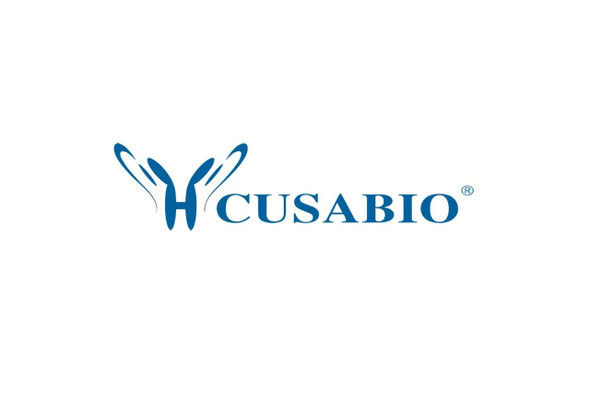Cusabio Human Recombinants
Recombinant Human SUMO-conjugating enzyme UBC9 (UBE2I), partial | CSB-EP025457HU1
- SKU:
- CSB-EP025457HU1
- Availability:
- 3 - 7 Working Days
Description
Recombinant Human SUMO-conjugating enzyme UBC9 (UBE2I), partial | CSB-EP025457HU1 | Cusabio
Alternative Name(s): SUMO-protein ligaseUbiquitin carrier protein 9Ubiquitin carrier protein IUbiquitin-conjugating enzyme E2 IUbiquitin-protein ligase Ip18
Gene Names: UBE2I
Research Areas: Cell Cycle
Organism: Homo sapiens (Human)
AA Sequence: MSGIALSRLAQERKAWRKDHPFGFVAVPTKNPDGTMNLMNWECAIPGKKGTPWEGGLFKLRMLFKDDYPSSPPKCKFEPPLFHPNVYPSGTVCLSILEEDKDWRPAITIKQILLGIQELLNEPNIQDPAQAEAYTIYCQNRVEYEKRVRAQAKKFAP
Source: E.coli
Tag Info: N-terminal GST-tagged
Expression Region: 1-157aa
Sequence Info: Partial
MW: 44.9 kDa
Purity: Greater than 90% as determined by SDS-PAGE.
Relevance: Accepts the ubiquitin-like proteins SUMO1, SUMO2, SUMO3 and SUMO4 from the UBLE1A-UBLE1B E1 complex and catalyzes their covalent attachment to other proteins with the help of an E3 ligase such as RANBP2 or CBX4. Can catalyze the formation of poly-SUMO chains. Necessary for sumoylation of FOXL2 and KAT5. Essential for nuclear architecture and chromosome segregation. Sumoylates p53/TP53 at 'Lys-386'
Reference: Identification of the structural and functional human homolog of the yeast ubiquitin conjugating enzyme UBC9.Yasugi T., Howley P.M.Nucleic Acids Res. 24:2005-2010(1996)
Storage: The shelf life is related to many factors, storage state, buffer ingredients, storage temperature and the stability of the protein itself. Generally, the shelf life of liquid form is 6 months at -20?/-80?. The shelf life of lyophilized form is 12 months at -20?/-80?.
Notes: Repeated freezing and thawing is not recommended. Store working aliquots at 4? for up to one week.
Function: Accepts the ubiquitin-like proteins SUMO1, SUMO2, SUMO3 and SUMO4 from the UBLE1A-UBLE1B E1 complex and catalyzes their covalent attachment to other proteins with the help of an E3 ligase such as RANBP2, CBX4 and ZNF451. Can catalyze the formation of poly-SUMO chains. Necessary for sumoylation of FOXL2 and KAT5. Essential for nuclear architecture and chromosome segregation. Sumoylates p53/TP53 at 'Lys-386'.
Involvement in disease:
Subcellular Location: Nucleus, Cytoplasm
Protein Families: Ubiquitin-conjugating enzyme family
Tissue Specificity: Expressed in heart, skeletal muscle, pancreas, kidney, liver, lung, placenta and brain. Also expressed in testis and thymus.
Paythway: NF-kappaBsignalingpathway
Form: Liquid or Lyophilized powder
Buffer: If the delivery form is liquid, the default storage buffer is Tris/PBS-based buffer, 5%-50% glycerol. If the delivery form is lyophilized powder, the buffer before lyophilization is Tris/PBS-based buffer, 6% Trehalose, pH 8.0.
Reconstitution: We recommend that this vial be briefly centrifuged prior to opening to bring the contents to the bottom. Please reconstitute protein in deionized sterile water to a concentration of 0.1-1.0 mg/mL.We recommend to add 5-50% of glycerol (final concentration) and aliquot for long-term storage at -20?/-80?. Our default final concentration of glycerol is 50%. Customers could use it as reference.
Uniprot ID: P63279
HGNC Database Link: HGNC
UniGene Database Link: UniGene
KEGG Database Link: KEGG
STRING Database Link: STRING
OMIM Database Link: OMIM









